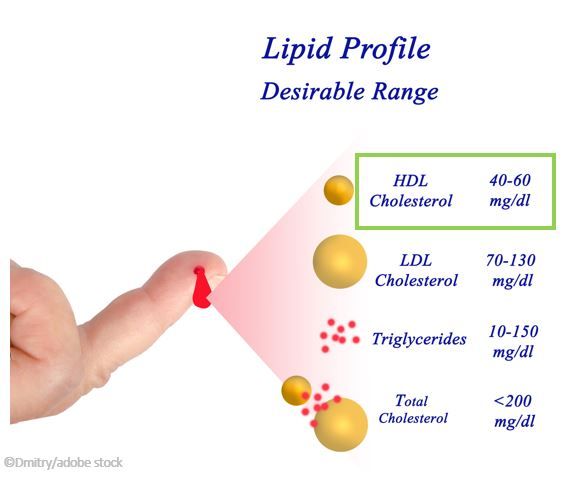High HDL-C Increases CV Risk in Men with Hypertension, Study Finds
In patients with hypertension, HDL-C >80 mg/dL was linked to a greater risk for CV events among men but not among women. Protective?
Elevated levels of HDL-C among men with hypertension but not among women were associated with an increase in cardiovascular (CV) risk in a recent study of approximately 12 000 participants published in the journal Hypertension.
The study investigators, from of the department of neuroscience, reproductive sciences and dentistry at Federico II University in Naples, Italy, report a U-shaped association between HDL-C levels and CV risk, with significantly greater risk of CV events at high levels and also at low levels vs at medium levels of HDL-C, although the effect at high levels was not observed in women with hypertension.

As context for the research, investigators, led by Federico II University academic researcher Bruno Timarco, MD, cite suggestions by other research teams that risk for CV death is reduced by 2% to 3% for every 1 mg/dL increase in HDL, supporting the conventional wisdom that higher levels of HDL-C are protective.
“In the algorithms currently used to calculate cardiovascular risk in the general population, HDL-C levels are considered protective. Our findings indicate that at high levels (ie, >80 mg/dL), this protective effect does not appear to hold true and, in fact, may confer an increased risk in male patients with hypertension,” wrote investigators.
Timarco and colleagues set out to investigate for the first time the relationship between HDL-C levels and CV events specifically in patients with hypertension. For participants, the team tapped the Campania Salute Network, an electronic registry of community hospital-based hypertension clinics and general practitioners from the Campania region in Southern Italy, giving them access to a large population with known high CV risk, well-characterized cardiometabolic measures, and long-term follow-up.
From an original database of 14 161 patients, investigators screened for adult patients with a confirmed diagnosis of hypertension, at least 1 follow-up visit, and without a history of prevalent coronary/cerebrovascular disease, atrial fibrillation, or valvular heart disease.
The final cohort numbered 11 987 individuals and was separated into 3 groups based on HDL-C level: Low <40 mg/dL (n=2674); medium 40 – 80 mg/dL (n=9060); and, high >80 mg/dL (n=53).
Mean HDL-C plasma concentration was significantly higher among women than among men (54.4 mg/dL vs 47.28 mg/dL; P <.001), according to the study. Of interest the authors report that the proportion of women in the high HDL-C group was approximately 3 times that of men.
FINDINGS
In their adjusted analysis, Timarco et al observed 245 CV events during a total follow-up of 25 534 person-years with hazard ratios as follows:
- 3.5% in the high HDL-C group
- 3.4% in the low HDL-C group (P <.08)
- 2.6% in the medium HDL-C group (P vs low and high HDL = .02).
Spline analysis revealed a nonlinear U-shaped association between HDL-C levels and CV outcomes. The association between high HDL-C and increased CV risk, however, was not observed for women in either logistic regression or spline analysis.
“Notably, we need to consider the low proportion of events (especially in the female cohort), leading to less precise estimates compared with the overall cohort,” they commented.
“Taken together, our data indicate that levels of HDL-C >80 mg/dL increase cardiovascular risk in male patients with hypertension. Therefore, we recommend to opportunely revise the algorithms currently used for the calculation of the cardiovascular risk,” the investigators concluded.
Reference: Trimarco V, Izzo R, Morisco C, et al. High HDL (high-density lipoprotein) cholesterol increases cardiovascular risk in hypertensive patients. Hypertension. Publisehd online August 15, 2022. doi:10.1161/HYPERTENSIONAHA.122.19912